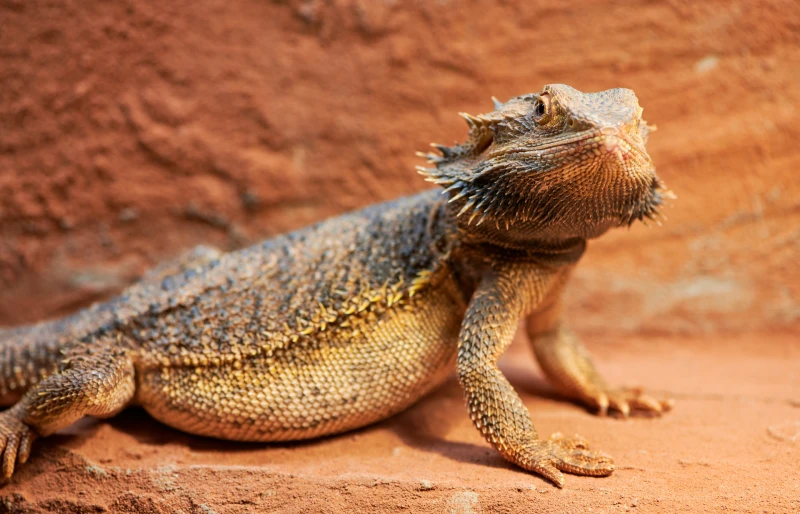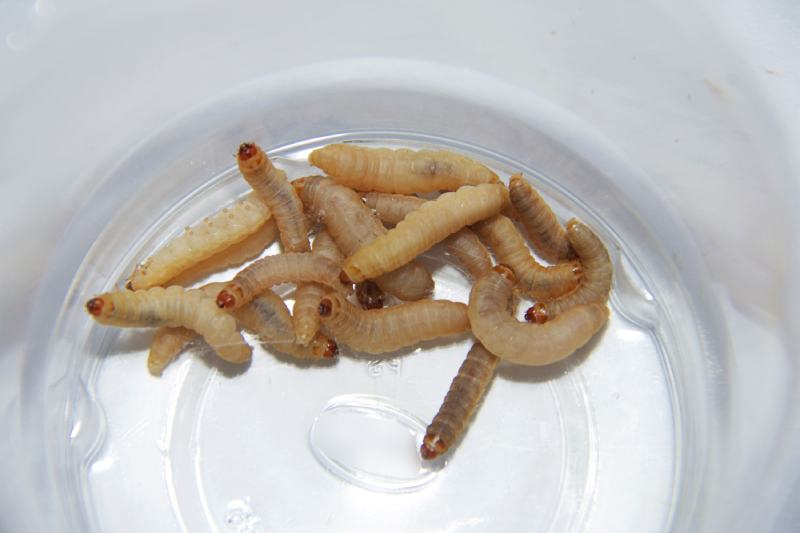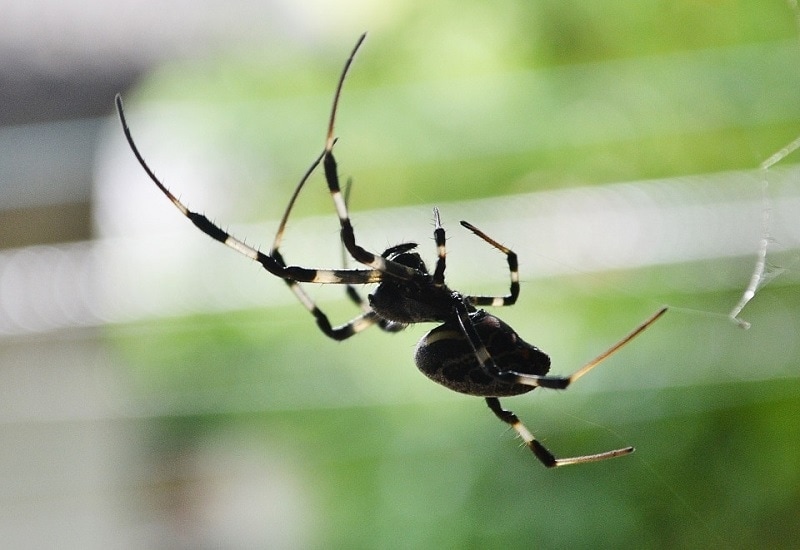What Do Bearded Dragons Eat in the Wild? Vet-Approved Diet & Tips
Updated on
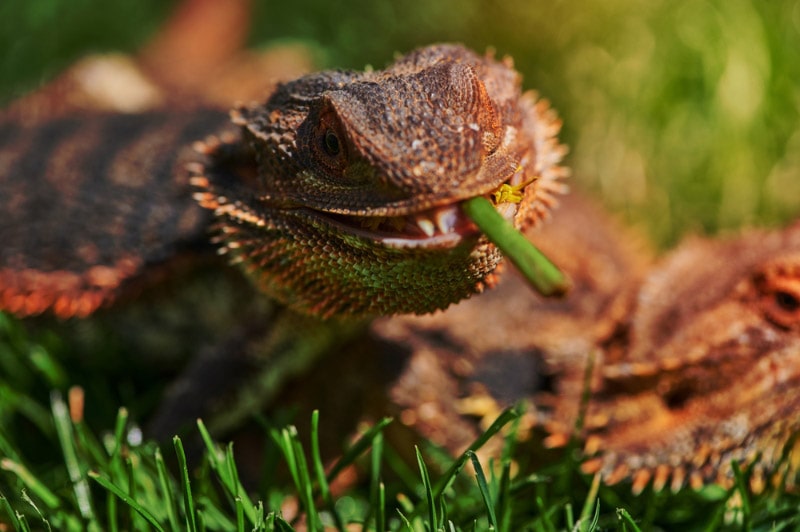
Click to Skip Ahead
While embarking on a journey to discover the dietary habits of bearded dragons in their natural habitat, we uncover that they are omnivores. Their palate is as diverse as the wild itself, featuring an impressive array of both small creatures and plant life. From insects to little rodents, from lush leaves to colorful fruits and flowers, the bearded dragon’s menu spans wide. Let’s journey further into the wild to understand more about these captivating creatures’ dietary preferences and how these insights can inform our approach to feeding our own domesticated pals.
The 4 Types of Food Bearded Dragons Eat
1. Insects: A Protein-Rich Delight
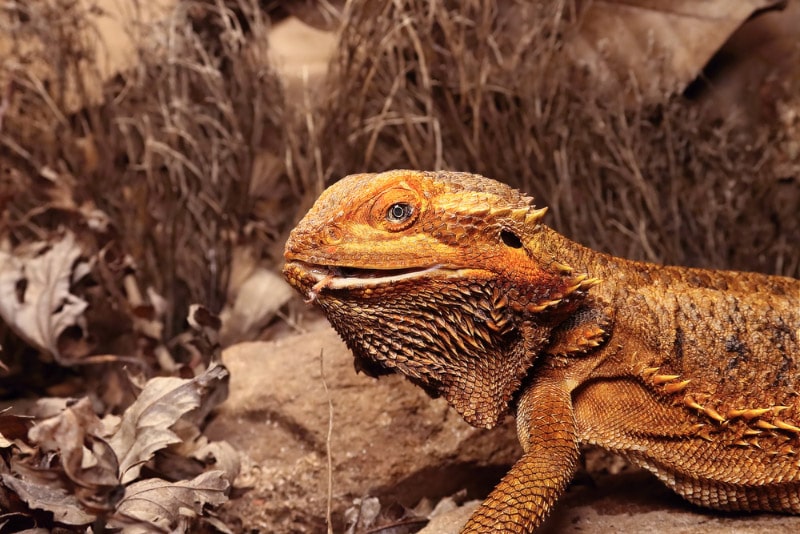
In the wilderness, bearded dragons enjoy a diet rich in insects, a primary source of protein. They aren’t picky and will chow down on anything that crosses their path from crickets, beetles, and spiders to other smaller lizards. This protein supply plays a crucial role in their growth and overall health.
The wild diet of bearded dragons isn’t just about the protein; it’s also about the hunting process. This is their chance to engage their instinctive behaviors, chasing and catching their meals. For a bearded dragon, a scurrying cricket isn’t just dinner, it’s a puzzle, a game of tag, a race against time. Every successful catch is a minor victory, keeping their minds sharp and their bodies active.
In captivity, recreating these conditions can provide great mental stimulation. Live insects can make feeding time more exciting and engaging, promoting natural behaviors. It’s also important to supplement their meals with calcium and vitamin D3, which may be lacking in captive bugs, to mimic the nutritional content of their wild-caught meals.
2. Small Rodents: The Occasional Treat
Their predatory instincts don’t stop at insects. Juvenile and adult bearded dragons are known to occasionally indulge in small rodents, given the opportunity. These small mammals offer a significant protein boost, but they’re not an everyday meal. Even in captivity, rodents should be given sparingly due to their high fat content, which can lead to obesity if overfed.
While rodents are a more unusual aspect of the bearded dragon’s diet, it doesn’t mean they’re any less significant. In the wild, snagging a mouse is an event or a special occasion that provides a significant calorie and protein boost. It’s a chance for them to tap into their more predatory instincts.
For captive beardies, it’s critical to keep rodent meals as rare treats. In the wild, these opportunities are infrequent, and replicating that scarcity helps prevent issues like obesity.
Remember that a captive bearded dragon’s lifestyle is less active than that of their wild counterparts. Thus, their dietary needs will be different, and calorie-rich foods like rodents need to be regulated carefully.
3. The Herbivore Side of Bearded Dragons

Bearded dragons are survivors, and part of being a survivor in the wild is being adaptable. In addition to their love for insects and the occasional rodent, they happily forage for the best in plant-based cuisine. Their wild salad includes a medley of leafy greens, delectable fruits, a variety of succulents, and even the occasional flower.
The taste for greens and fruits doesn’t only offer a refreshing change from their protein meals. It introduces a rainbow of nutrients into their system, boosting their overall health. They acquire vitamins A, C, and K from these sources, as well as important minerals like calcium and fiber, which aid digestion.
4. Vegetation: More Than Just Food
Interestingly, the plant matter serves more than just their nutritional needs. Bearded dragons have a deep connection with their environment, and part of that connection is using vegetation as a means of protection. Hidden among the leaves, they can watch for predators and prey alike, remaining undisturbed. Their ability to blend with their surroundings makes them masters of disguise.
This use of plant life emphasizes the incredible flexibility of bearded dragons and their ability to turn any aspect of their environment to their advantage. In a way, their world is both their pantry and their fortress, a testament to their survival skills.
The Impact of Seasonal Changes
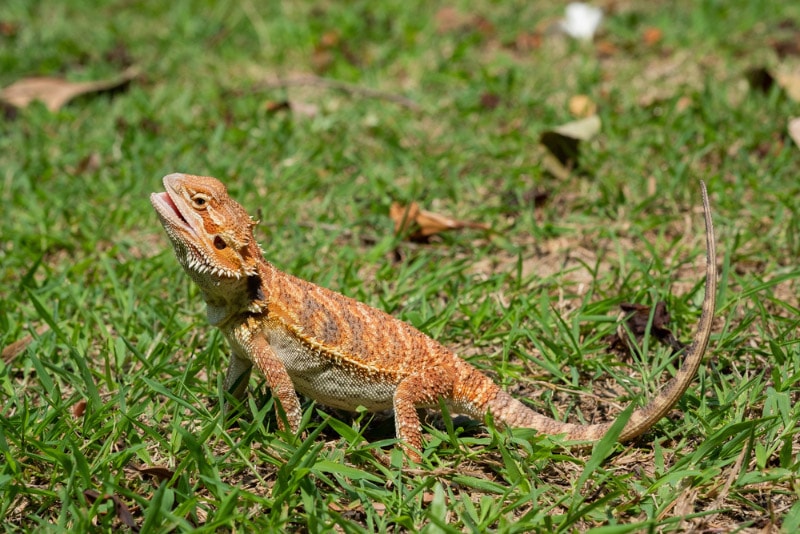
Seasonal shifts can significantly influence the eating habits of these resilient creatures. The hot, dry months of summer push them towards plant-based foods, which help them stay hydrated. Fruits and succulent plants are particularly sought after for their high water content. This is nature’s way of ensuring they get enough water during droughts.
On the other hand, the arrival of cooler weather sees a shift in their dietary preferences towards more calorific foods. As temperatures drop, they turn to insects and small animals, which provide the high energy levels they need to keep warm. It’s a clever way of adapting their dietary needs to the changing environment, and it illustrates how well they’ve evolved to survive in different conditions.
Healthy Diet Tips for Domesticated Bearded Dragons
Understanding the natural dietary habits of bearded dragons can greatly influence how we approach feeding them in captivity. Domesticated bearded dragons still carry the instincts and dietary needs of their wild counterparts. Here are a few tips to keep in mind:
Offer Variety: Just as in the wild, a varied diet is vital. Incorporate a mix of safe vegetables, fruits, and insects to keep your pet healthy. A colorful salad of leafy greens, bell peppers, or squash with a side of mealworms or crickets would be a bearded dragon’s delight.
Maintain the Right Ratio: As bearded dragons grow, their dietary needs change. Juveniles require more protein, thus more insects, whereas adults need a diet leaning towards plant matter. As a general rule, a diet for young bearded dragons should be about 80% insects and 20% plant matter, gradually transitioning to 80% plant matter and 20% insects as they grow.
Hydration Is Key: While bearded dragons get much of their water from their food, it’s still crucial to provide fresh water regularly.
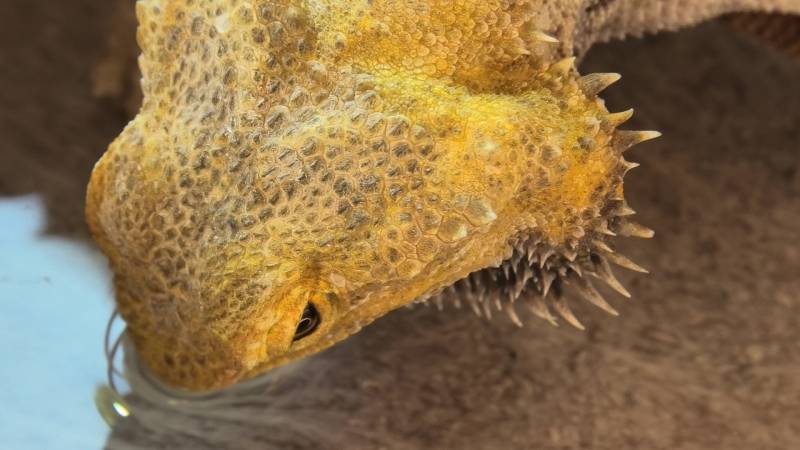
Foods to Avoid
While we aim to replicate the wild diet of bearded dragons, it’s essential to understand that not all food suitable in the wild is safe for captive dragons. Foods such as avocados, rhubarb, and mushrooms are toxic to bearded dragons and should be strictly avoided. Similarly, insects caught from the wild might carry pesticides or parasites, which could be harmful. Always source insects from trusted pet stores or breed your own.
Conclusion
Understanding the diet of wild bearded dragons gives us valuable insights into how best to feed our scaly friends at home. Remember, variety is key, and while their diet includes both insects and plant matter, the ratio changes as they grow. Always provide fresh water and be vigilant about their health.
In weaving these strategies into your care routine, you are mirroring the wild eating practices of your bearded dragon yet also respecting the different contexts of their life in a secure environment. Our aim is to ensure our Bearded Dragon buddies enjoy a fulfilling, healthful existence, and a comprehensive, nutrient-dense diet is a substantial stride towards this goal. So, when you’re crafting their next feast, bear in mind that you’re not just catering to your pet, but you’re also echoing the intrinsic dietary patterns of a bearded dragon in the wild. The outcome? A vibrant, well-nourished bearded dragon flourishing under your mindful stewardship. It’s an enthralling journey and a delight to be a part of.
Featured Image Credit: laurahagi, Shutterstock


